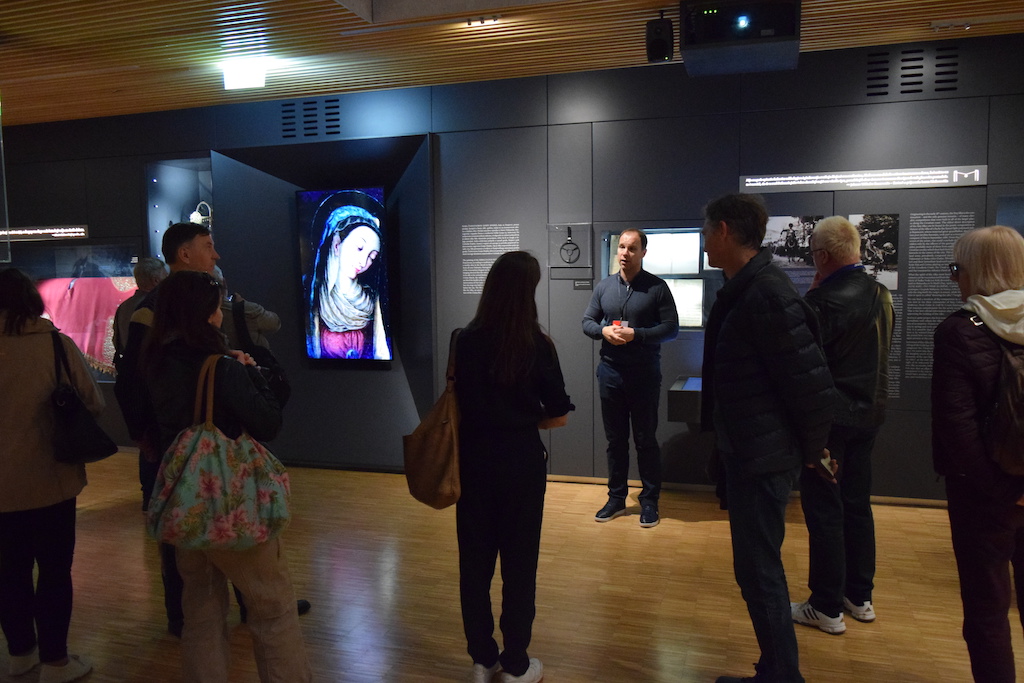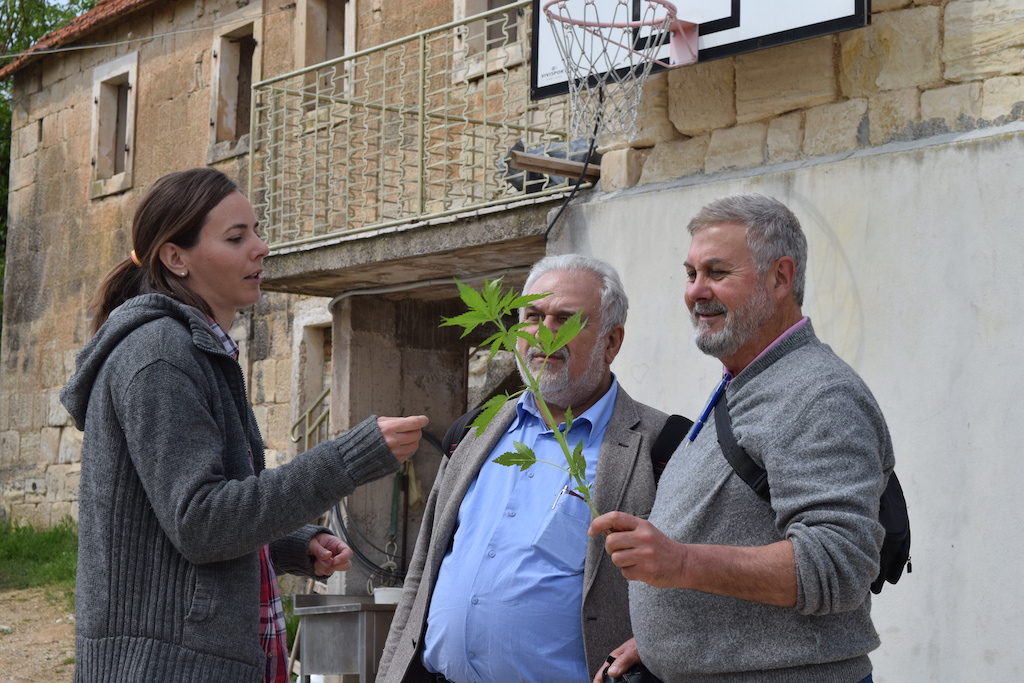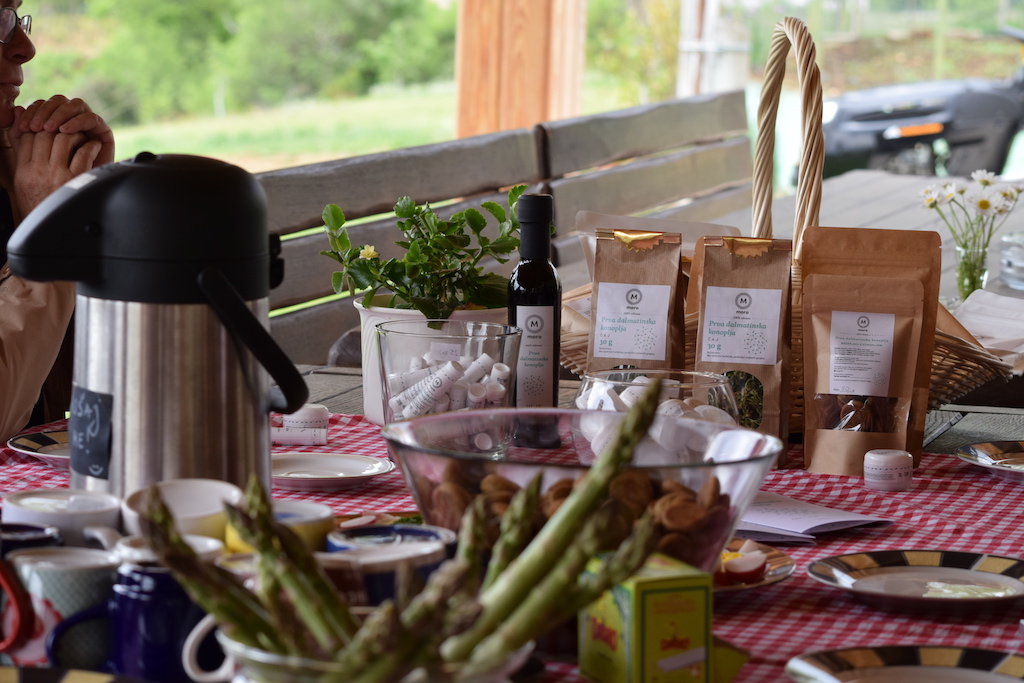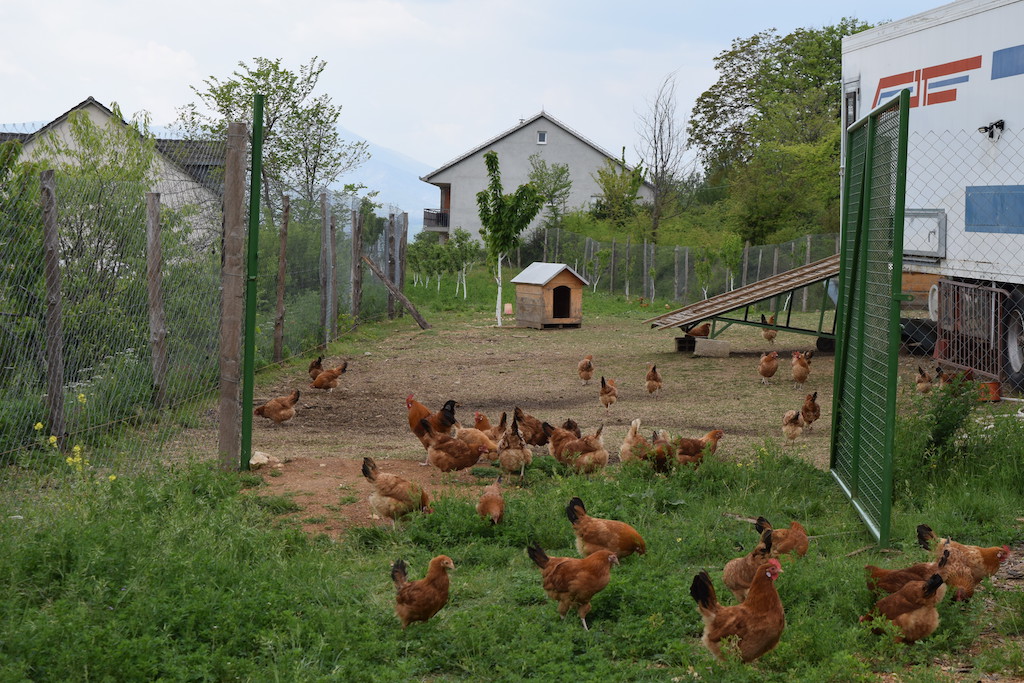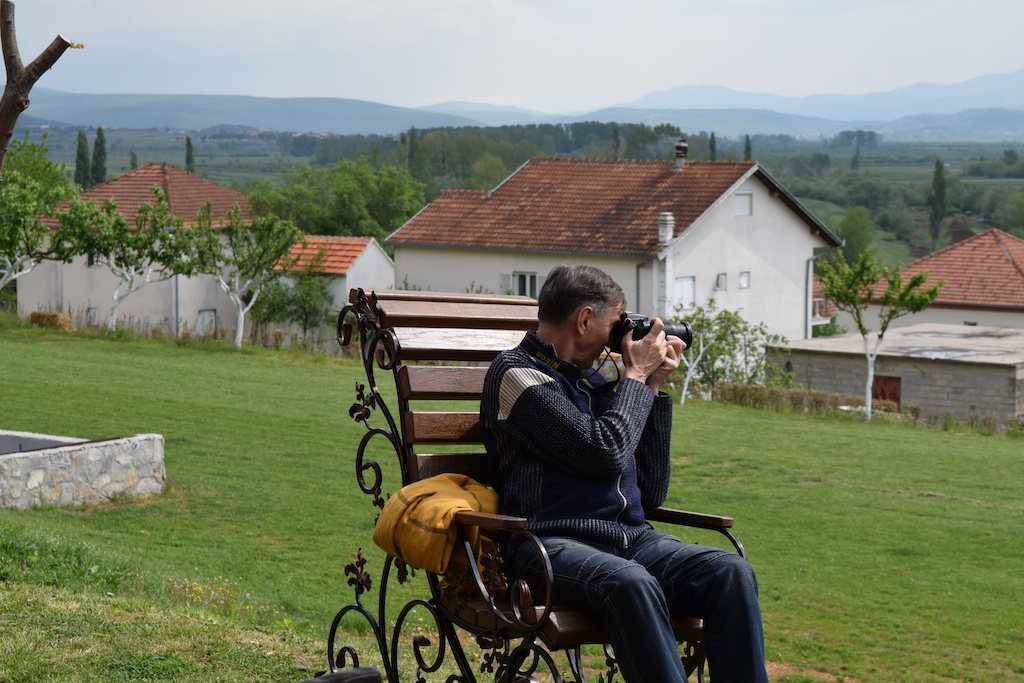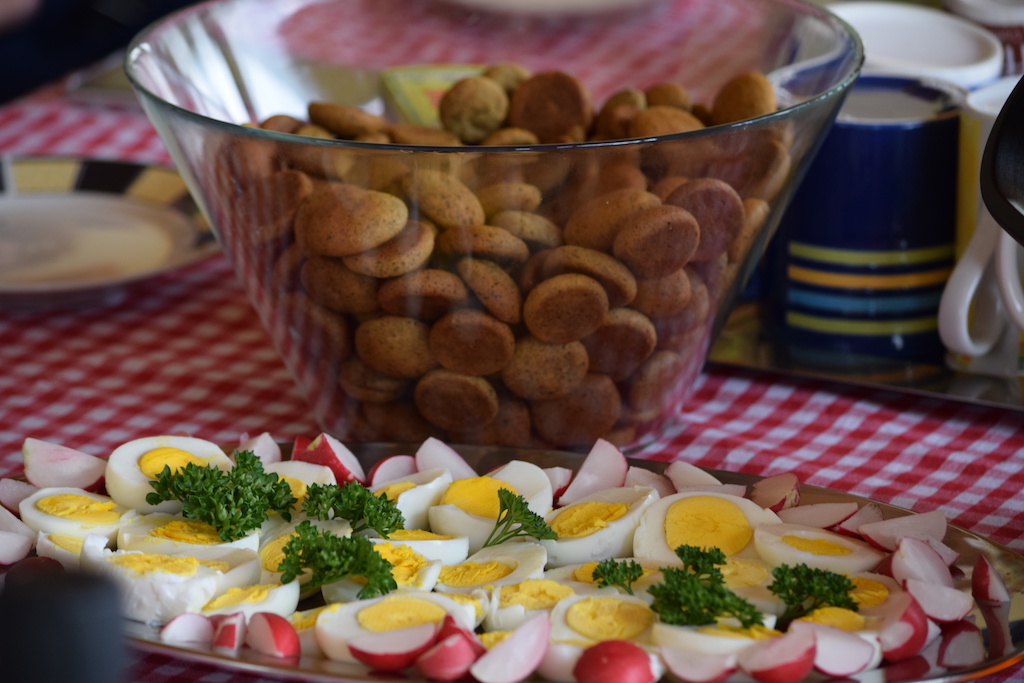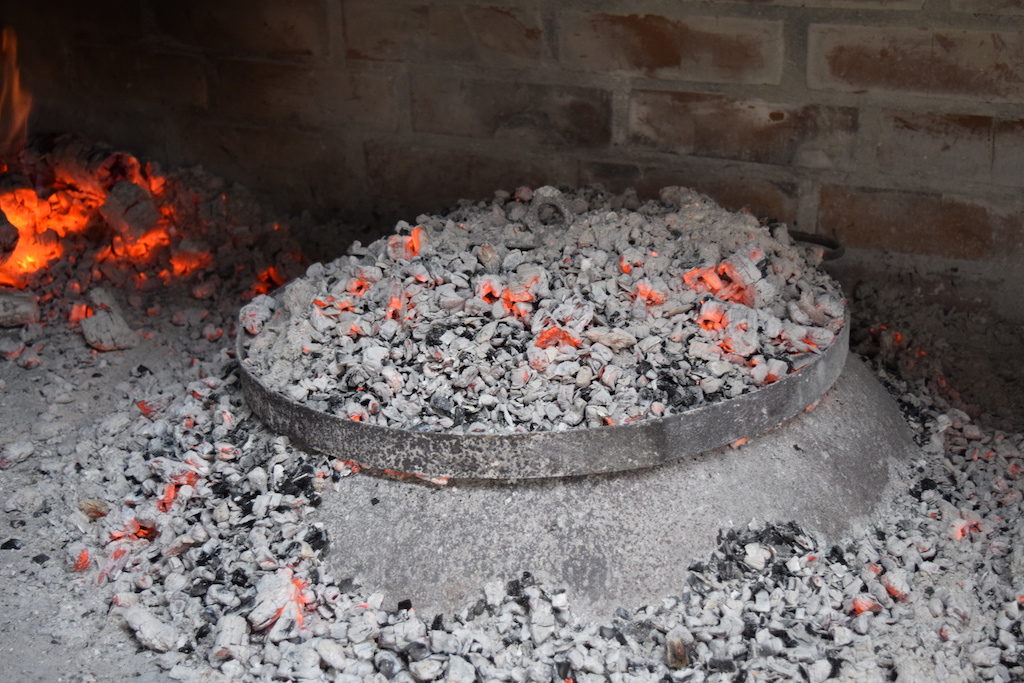USS Abraham Lincoln Carrying 5,000 Sailors Coming to Split Port in May
The government has given the green light to the US Navy's Nimitz-class aircraft carrier Abraham Lincoln (USS Abraham Lincoln (CVN-7) to sail into the Split port. The monster ship, which carries ninety fixed-wing aircraft and helicopters, will stay in Split from May 8 to 11, mainly so the crew can have a few days of rest, reports Slobodna Dalmacija on May 2, 2019.
The approval for the arrival of the United States Navy ship - or part of their fleet located in the Mediterranean - was requested by the US Embassy in Zagreb from the Ministry of Foreign Affairs. The Government's decision is in accordance with the provisions of the Maritime Code.
Known better by the nickname "Abe" in the US Navy, the USS Abraham Lincoln will sail more than five thousand sailors, pilots and other personnel to Split.
This is, in fact, the third US carrier that will be anchored in Split since Croatia's independence.
In December 2015, USS Harry S. Truman, an American ship the size of three football pitches, sailed the Brač channel carrying a load of 85 aircraft and 20 helicopters. Like the "Abraham Lincoln," the "Truman" is a navy ship in the Nimitz class, which has carried some of the world's largest aircraft.
The USS Enterprise visited Split in 2006, and on that occasion, the retired HV Lieutenant Colonel Srećko Herceg was awarded the American Medal of Honor. Herceg is the descendant of Petar Herceg Tomich, a US sailor who was killed on the US Navy ship USS Utah during the Japanese attack on Pearl Harbor.
Split was also visited by American ships in the former Yugoslavia, precisely the USS Saratoga in April 1976 and the USS America in May 1979.
One thing we know for certain - plan accordingly from May 8 to 11, as this extra 5,000 people in Split makes up just a small part of the crowds we are already witnessing!
To read more about lifestyle in Croatia, follow TCN’s dedicated page.
Hajduk and HNS Meet: Details Revealed
On Monday, Marijan Kustić, the executive director of HNS, met with representatives of Hajduk and the Split mayor in Zagreb.
Culture and Cuisine of Sinj Region Delights Prominent International Journalists
May 2, 2019 - On May 1, the Croatian Tourist Board and the Tourist Board of Split-Dalmatia County, in cooperation with the local tourist communities, welcomed ten prominent international journalists in Inland Dalmatia as part of the ongoing tourist promotion of the area. This time, the journalists explored the Sinj region.
On the initiative of Joško Stella, director of the Tourist Board of Split-Dalmatia County, as part of organized study trips, journalists arrived from all countries the Croatian National Tourist Board (HTZ) has a representative office. In cooperation with local tourist boards, around 40 foreign-based journalists will visit the cities of Split, Hvar, Brač, Vis, Solin, Klis, Trogir, Trilj, Sinj and Omiš in three very attractive tourist programs. They will inform tourists about selective forms of tourism, that is, natural, cultural and gastronomic forms, as well as the opportunities for active holidays in this area.
The four-day program "Culture and Gastronomy" - announced as "the most delicious program" - presents the gastronomic and cultural offer of the cities involved in the tour.
Reputable journalists from Austria, Italy, the Czech Republic, Slovakia, Poland, the Netherlands and Norway - Jerzy Niemocinski, Anna Sienkiewicz, Ewa Wagner, Adolf Wurzer, Marta Budska, Obert Oppelt, Maurizio Ceccaioni, Giuseppe Danielli, Giorgia Lola Oost, Ann-Mari Helena Gregersen and Elin Kristin Kristoffersen - arrived in the Sinj region on the third day of their stay in Split-Dalmatia County.
Accompanied by tour guide Dina Ivančić and director of the Tourist Board of Sinj, Monika Vrgoč, the group was first introduced to the geographical position of Sinj, the rich and intriguing history of the city, the shrine of the Miraculous Lady of Sinj, the Alka and the significance of the City of Sinj for the whole Cetina region. The group then visited the Sinj Alka Museum, accompanied by the curator Tomislav Barhanović. With an interesting interpretation, Barhanović brought the group closer to the significance of the museum and its exhibits. Namely, the modern concept of the museum, the fact that it was nominated for the European Museum in 2017 and won the prestigious Europa Nostra Award in 2018, its many interactive features, and valuable and unique museum exhibitions, which delighted the journalists.
After the Alka Museum, the group toured the OPG Moro in Gala. They were welcomed by the friendly leaders of the OPG, Jelena and Ivana Moro. Their ecological family farm was founded in 2003 to grow domestic fruit and vegetables, and breed animals in a controlled environment where they eat healthier and thus live healthier lives. In the heart of the Dalmatian hinterland, in the oasis of the fertile and vast Sinj field, through which the clear and crisp Cetina river flows, all the preconditions are available to the Moro family. The OPG is held by three generations, sharing traditions, knowledge, and skills, all with continuous physical work. Since 2013, OPG Moro deals with sowing as well as seed processing and industrial hemp. Their seeds are ecologically certified, sown in fertile soil without the use of pesticides, herbicides, and artificial fertilizers, to be compatible with organic production, and therefore with nature. Currently, they have six products from hemp: tea, oil, protein, flour, face and body cream as well as lipstick.
Otherwise, OPG Moro realized support from rural development measures for operation type 6.1.1. and 6.2.1., and will develop their idea of a farm for the ecological breeding of chickens. The plan is to use waste that has been processed in hemp as a perfect supplement to poultry feed. It already contains 25 percent of protein, meaning at least 80 percent of the animal’s diet will come from their own production. The kind hosts made sure that all journalists tasted their produce, and creams and lip balms were given as gifts. The journalists were delighted with the quality of the product, especially the hospitality of all Moro family members.
Enjoying the beautiful nature on the way from Gala, through Obrovac Sinj, Han, and Bajagić to Hrvace, the journalists also had the opportunity to see the source of Kosinac, the Han bridge built in 1849, Rumin and the bridge on Panj constructed in 1852. As the whole program is largely dedicated to gastronomy, the journalists enjoyed a traditional gastronomic offer at the Panj Farmhouse and enjoyed the most famous dishes of the region such as uštipak, Sinj arambaša, peka of roast veal, and fritule.
The journalists were pleasantly surprised by the potential of the Sinj region. The group continued their journey exploring Omiš.
You can learn more about Sinj here.
To read more about travel in Croatia, follow TCN’s dedicated page.
Split Breaks Tradition, No Beans on Marjan for May Day
May 1st, known as International Workers' Day, Labor Day, and May Day, is celebrated today in many parts of the world. Labor Day is celebrated in the name of labor solidarity in the struggle for better working conditions. It is also marked to remember the bloody protests in Chicago on May 1, 1886, where workers fought against exploitation and sought an 8-hour work day and higher wages. Croatia joined the movement in 1890, and the first gathering was organized at Maksimir Park in Zagreb. Workers described their demands with the three 8s: eight hours of work, eight hours of rest and eight hours of cultured education.
In time, the struggle for workers' rights retreated to the background, and May 1 today is no longer focused on protesting but is a work-free holiday with the tradition of beans and carnations.
While the largest May Day celebration in Croatia will take place in the Croatian capital at Maksimir Park, where mayor Milan Bandić and associates will distribute about 60,000 servings of beans with sausages, the Dalmatian Capital will be bean-free, reports Dalmacija Danas on May 1, 2019.
Namely, the traditional gathering at Marjan with free beans and socializing - which is a symbol of this holiday in Split - will break tradition this year. As the celebration has been organized by the Association of Independent Trade Unions of Croatia (SSSH) together with the City of Split, the trade unions have said that they are focused on the initiative "67 is too much" (“67 je previše”) and emphasized that they cannot be in two places at the same time.
Instead, three Trade Unions (Savez samostalnih sindikata Hrvatske (SSSH), Nezavisni hrvatski sindikati (NHS) and Matica hrvatskih sindikata (MHS), will collect signatures to call for a referendum on changes in retirement conditions in the places where Labor Day is traditionally marked.
In Croatia, May 1 will be celebrated in various ways in the organization of cities, municipalities, associations or parties, and many citizens will spend this non-working day out in nature with friends and family.
To read more about lifestyle in Croatia, follow TCN’s dedicated page.
A Wind of Change in Croatian Diaspora Relations: Entrepreneurs Looking Forward
May 1, 2019 - The relationship between Croatia and its diaspora has always been complex, but a new positive wind of change will be on display at the 2nd International Conference on Diaspora Tourism.
One of the most fascinating relationships in this very complex land is that between Croatia and its diaspora, a relationship which is more complicated than most longterm relationships.
It is also multi-faceted, with four main waves of emigration over the last 200 years to all corners of the globe. The reasons for each wave varied from economic to political persecution to war to economic. As such, the experiences of the diaspora and the individual relationships of members of the diaspora is very different. Those who are second or third generation descendants of Croats who moved to Australia due to persecution from Tito, for example, will have grown up in Croatian Australian communities with a very different outlook on the homeland than those who are descendants of economic migrants after the devastating phylloxera in the late 19th century now in Cleveland, Ohio. You can learn more about the waves of Croatian emigration and where the Croatian diaspora is located in the Total Croatia intro to the Croatian diaspora.
But the diaspora all have one thing in common - a burning love of the homeland and a very strong patriotism.
And even though they pay no taxes but have the vote, the diaspora certainly put their hand in their pockets, with diaspora remittances of 2 billion euro exceeding the total foreign investment into Croatia in 2018. Every statistic tells a story.
They certainly put their hands in their pockets during the Homeland War, as well as immediately afterwards, pouring investment cash into the newly independent Croatia. Unfortunately, the mighty State of Uhljebistan was formed at the same time, a State which continues today within Croatia. Money was siphoned off, projects never happened, a small number in power got very rich.
Just one more layer of complexity to add to the diaspora relationship to the Homeland.
But the love for the Homeland was as strong as ever.
I was a speaker at the 3rd Croatian Diaspora Congress last year (you can see my speech below). It was a fascinating event, and at times I felt like an intruder as a non-Croat, especially during the emotional visit to the Vukovar Hospital Museum.
One of the most fascinating dynamics of the conference was observing the older diaspora generation, many of whom had experienced emigration at first hand, and the new generation entrepreneur, both diaspora and those living in Croatia.
There was a vibrancy and positivity and looking to the future that I found very exciting in this younger generation. The bonding and remembering of the past is, of course, an essential part of any diaspora gathering. But so too, at least in my opinion, these conferences should be used as opportunities to network and strengthen business bonds between the two.
There were elements of that in Osijek, a lot more of that at the excellent G.2 conference in Zagreb, but I think the best diaspora conference so far, in terms of looking ahead, is coming to Split in a couple of weeks. Looking at the lineup of panels and speakers, the 2nd International Conference on Diaspora Tourism, is set to bring together a global force of positivity and entrepreneurship, which could do wonders for a new relationship between the younger generation diaspora and Croatia's successful entrepreneurs.
Minutes after I published the event announcement a few weeks ago, I received a message from a TCN reader in South Africa asking if I thought it was worth attending, as it was an expensive trip from Cape Town. Yes, I replied, without hesitation. A similar question from an Australian Croatian friend living in Dalmatia, who has traditionally been wary of these gatherings. She will always be there.
A crucial difference in the organisation of this conference is that most of the organisers come from successful business backgrounds, and while all are proud patriots and remember the past, they also see the economic opportunity and chance to strengthen the bonds of cooperation and business, for the greater good of Croatia.
As one of the organisers and proponents of change, Ognjen Bagatin from Bagatin Clinic, often says in his presentations to the diaspora:
"We need you. You are our greatest ambassadors."
This relationship between Croatia's entrepreneurs and the business-minded diaspora is young, but very exciting. Mistakes will be made, but after the negative impressions after the investments after the Homeland War, trust is slowly building up again.
If you are an entrepreneur with a love of Croatia, this conference should be an inspiration, with plenty of first-hand experiences of success stories, as well as opportunities for collaboration. I encourage you to attend.
And, being as useless as I am, I cannot now find the conference programme, which I will link here as soon as I do.
To learn more about the conference, visit the official website.
New Traffic Regulations in Split for Upcoming Tourist Season (VIDEO)
April 30, 2019 - The City of Split announced that from the beginning of June, namely June 1, 2019, new traffic regulations would be in force through the City Port, developed by experts from Trivium in cooperation with the Faculty of Civil Engineering, Architecture and Geodesy in Split, said Deputy Mayor Nino Vela at a press conference held on Tuesday. Vela also said that the City of Split, together with the Croatian Roads and the Port Authority, with the support of the Police Administration of Split-Dalmatia, Split-Dalmatia County and the city companies Promet, Čistoća and Split Parking, took part in solving the current, unsatisfactory traffic situation in Split. The group aimed for better vehicle flow, starting from the City Port which is a traffic epicenter of the city.
“The analyzes carried out have offered a new regulation that has the ambition to become a permanent solution,” Deputy Vela said.
Miroslav Jakovčević of Trivium spoke about the interventions that will commence immediately after the Sv. Duje holiday, to be completed by the end of May and which cost about half a million kuna. The biggest announcement is an entirely one-way Zvonimirova Street, completely one-way traffic through the City Harbor, with no turn to Zagrebačka Street from the direction of the Port.
Thus, Zvonimirova street, just like last year, will be one-way, and four lanes will continue toward the city harbor. However, exiting the port will take place in only one direction, via the Bačvice bridge. The lanes at the bus station will turn in the opposite direction, considering all buses will travel to Jadranska Street.
Traffic analyzes have shown substantial capacities of this new solution and no crowds and stops approaching the City Port are expected. There will still be a problem of departing from the City Port, at peak hours (13.30 to 14.00) every day. This will be regulated in the future by adapting the timetables of Jadrolinija.
Traffic experts have concluded that, in addition to an increased number of cars, the problem is pedestrians, and they will also benefit from the new regulations. This temporary solution could also become permanent.
Check out the new flow of traffic below.
Find the full details of the project here.
To read more about lifestyle in Croatia, follow TCN’s dedicated page.
Slide into the Season with Something New at Brasserie on 7
A new season is abloom at Split’s Brasserie on 7 thanks to a heavenly menu destined to stimulate all of your spring senses.
World's Biggest Welcome in Croatia: Day 38 - Trogir to Trilj (Kayak, Climb, Bike)
April 30, 2019 - Putting Croatian adventure tourism on the map, with the biggest welcome in the world. Day 38 of this incredible 2011 adrenaline trip covering 2,500 km along the Croatian coast.
The World's Biggest Welcome, an ambitious adventure tourism project in 2011 in Croatia enters Day 38 of this 2019 appreciation of one of the finest tourism promotion projects ever in Croatia.
The plan? To showcase the diversity and fabulous offer of adventure tourism in Croatia by following a GPS route the length of the Croatian coast in the shape of the word 'Welcome' - thereby creating the biggest welcome in the world from a hospitable tourism country.
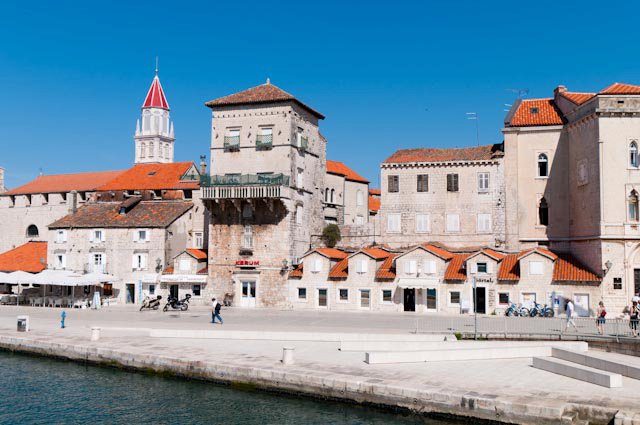
Day 38 moved from Trogir to Trilj.
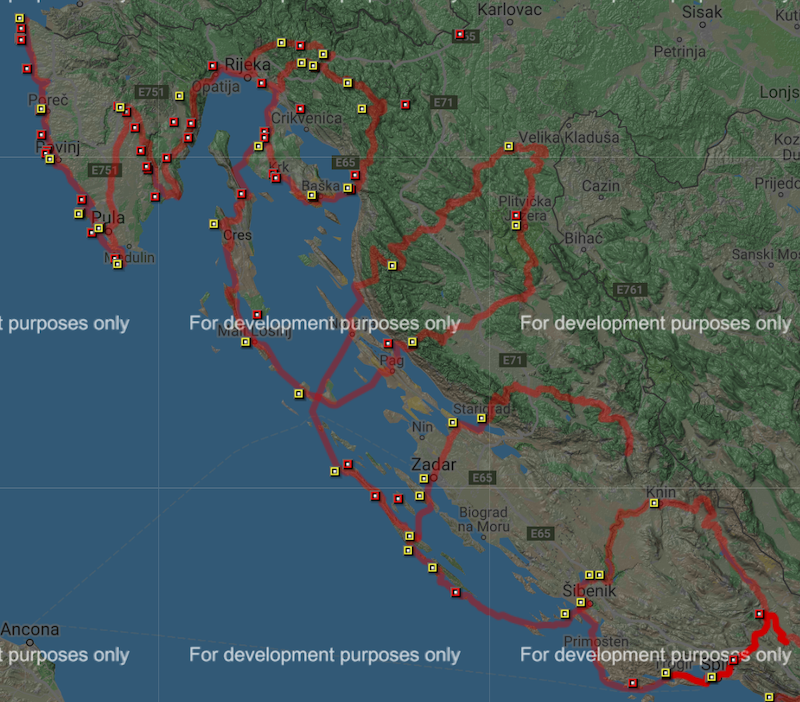
72 kilometres for the day: 15 km kayak from Trogir to Split, followed by a 2 km climb to the top of Marjan hill, and a 55 km bike ride from Split to Trilj to complete forming the ‘O’ in ‘Welcome’.
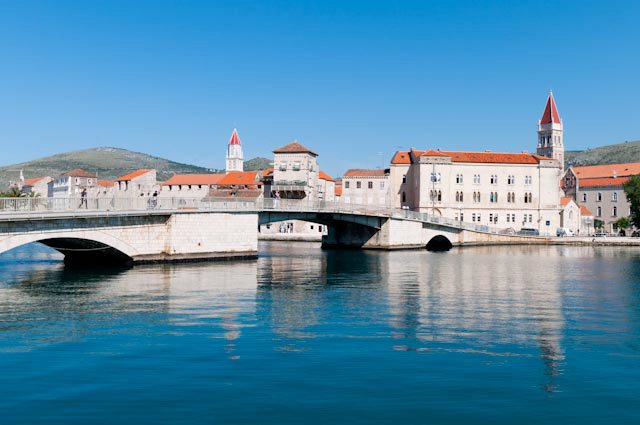
Day 38 started in the UNESCO town of Trogir.
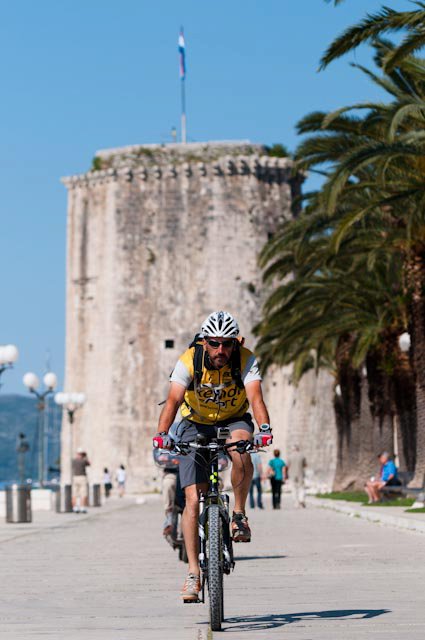
Lacko setting off towards Slatine on Ciovo.
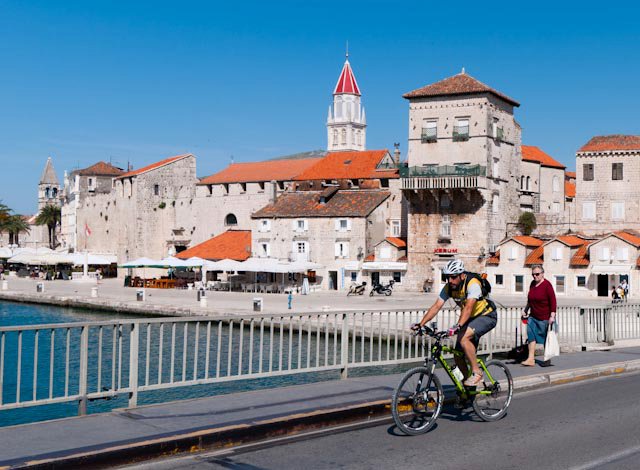
Lacko crossing the bridge to Ciovo.
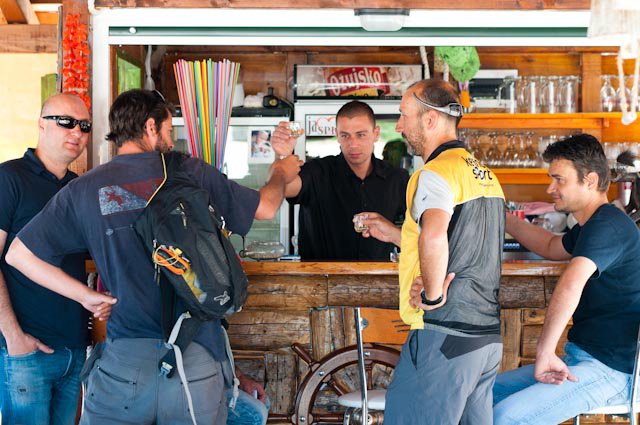
The ride couldn't go far without brandy at a local bar.
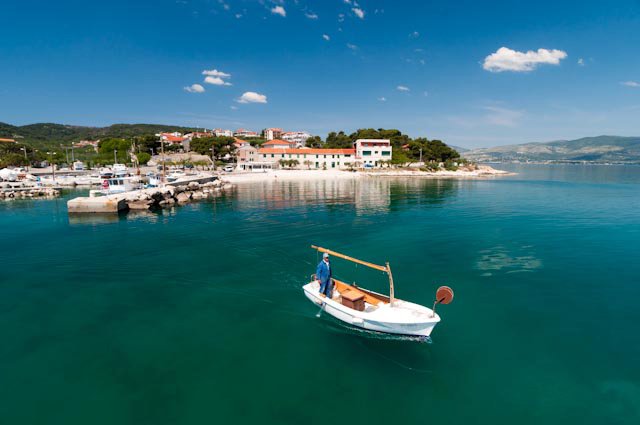
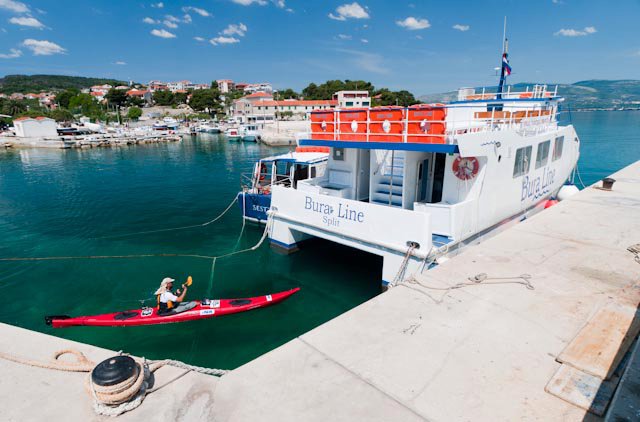
Slatine and Lacko by the Bura Line boat to Split. Will Lacko make it through?
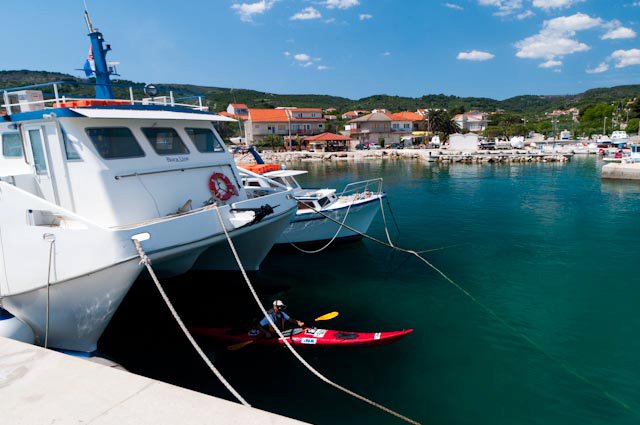
Indeed he did.
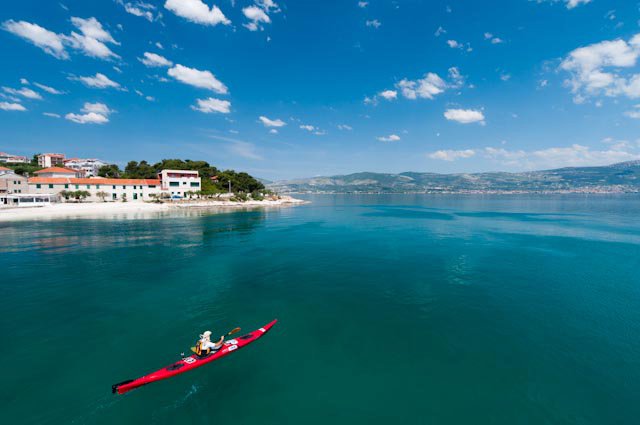
From Slatine to Marjan.
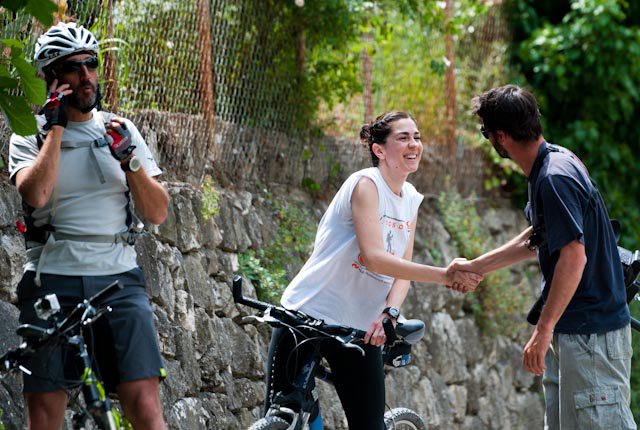
Lacko meets the team at Marjan.
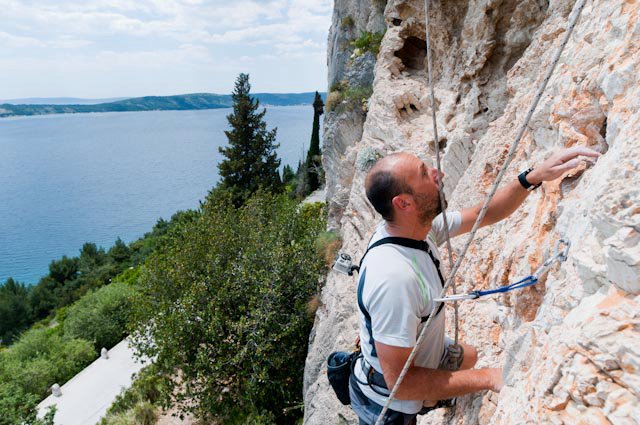
And he begins the climb to the top.
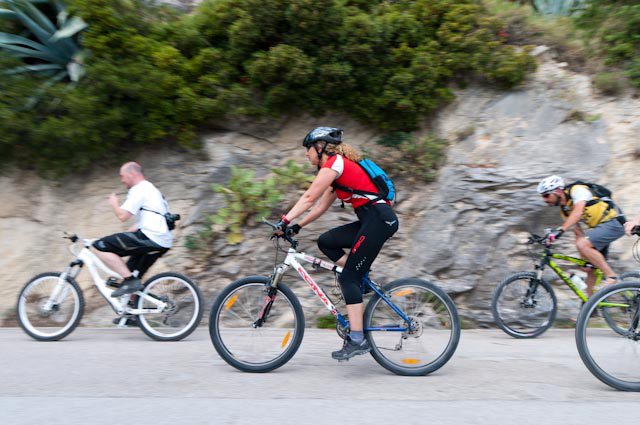
From Marjan to Klis.
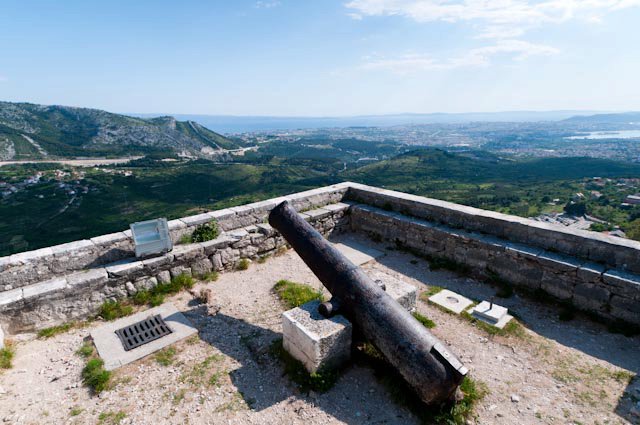
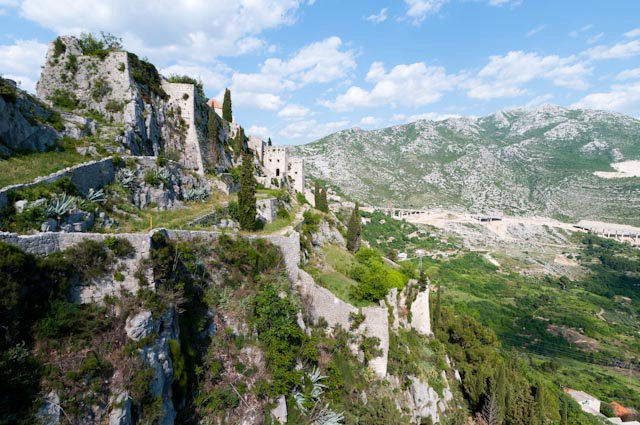
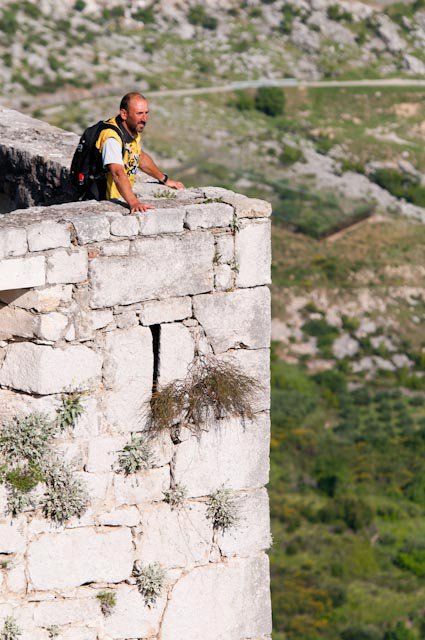
And Klis Fortress in all of its glory.
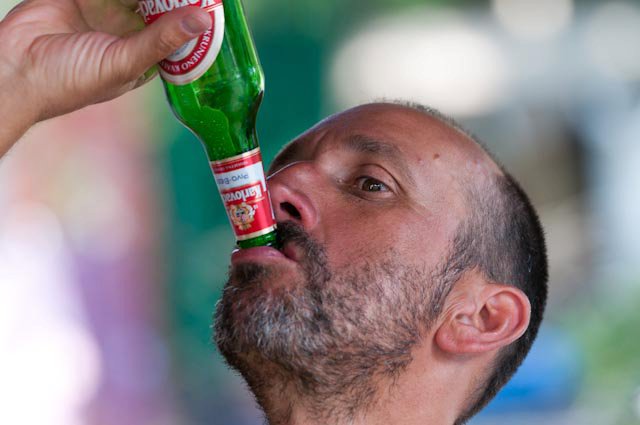
It was an experience best washed down with a beer.

Jagoda joined Lacko from Sinj to Trilj.
A key part of the project was promoting tourism, and the official website has details of the key places visited during the day.
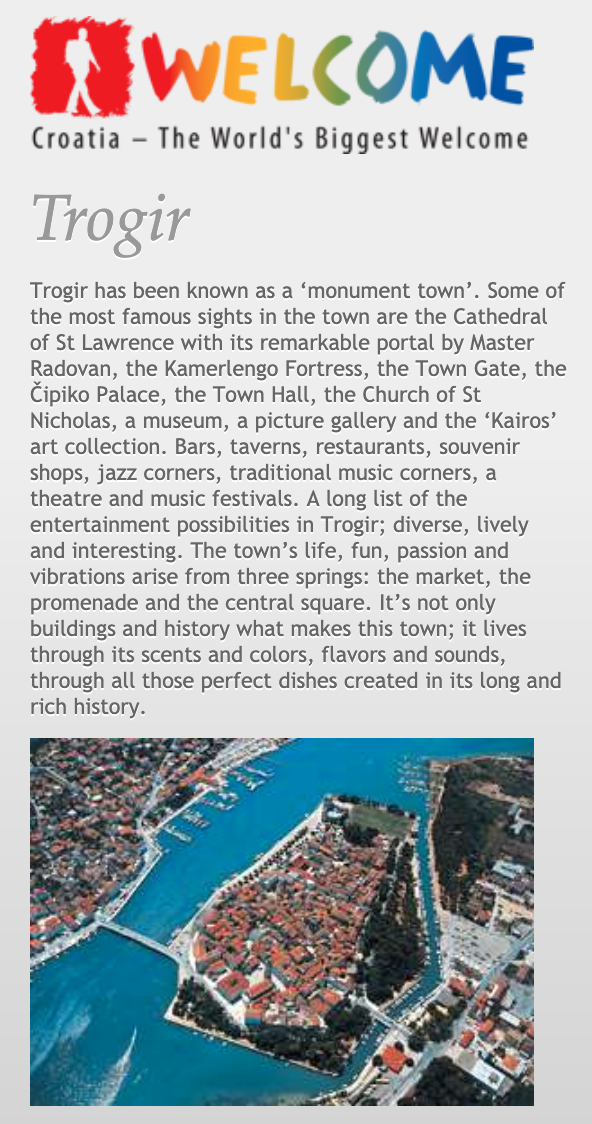
Trogir.
You can see the entire project on the Welcome website, as well as much more of Luka Tambaca's stunning photography on the Welcome Facebook page.
Tune in tomorrow for Day 39, as Lacko moves from Trilj to Omiš.
To follow the whole project from the start, follow the dedicated TCN page.
Split Marks International Jazz Day: From Street Concerts to the Circus
Split will celebrate this special day of jazz music on April 30, 2019.
HNL Round 31 Recap: Osijek Tops Dinamo, Gorica Crushes Hajduk
April 29, 2019 - The 31st round of the Croatian First League was held from April 26 to 28, 2019. While the Croatian champions Dinamo have nothing to play for but pride for the rest of the season, they did manage to lose to Osijek - and after a brilliant display by Hajduk in the 30th round, the Split club fell to Gorica.
Without further ado, here is our round 31 HNL recap.
Lokomotiva v. Istra 1961 (1:1)
Lokomotiva and Istra opened the 31st round on Friday, April 26, 2019, in Zagreb in front of 480 fans.
Lokomotiva was the first to score thanks to a goal by Ivanušec in the 40th minute for 1:0 at the half. Fuentes equalized for Istra 10 minutes later for 1:1.
Lokomotiva is currently in 6th place with 48 points, while Istra is in 9th place with 22.
Gorica v. Hajduk (3:0)
Gorica and Hajduk met on Saturday, April 27, 2019, in Velika Gorica in front of 8,000 fans.
Gorica scored their first goal already in the 11th minute thanks to Miya. Just before the half in the 45th minute, Zwolinski nailed Gorica’s second goal, which was a penalty, for 2:0. Miya scored again for Gorica in the 47th to confirm the blowout win.
Gorica is currently in 5th place with 49 points, while Hajduk is in 4th with 50.
Osijek v. Dinamo (2:1)
Osijek and Dinamo met on Saturday, April 27, 2019, at City Garden Stadium in front of 3,310 fans.
Dinamo was the first to score thanks to a goal by Šitum in the 20th minute. Talys equalized for Osijek in the 36th for 1:1.
After Dinamo’s Perić was given a red card in the 66th minute, Osijek’s Marić was able to score for the win in the 76th minute for 2:1.
Osijek is currently in 3rd place with 53 points, while Dinamo is in first with 79.
Inter Zaprešić v. Slaven Belupo (1:3)
Inter and Belupo met in Zaprešić on Sunday, April 28, 2019, in front of 263 fans.
Goda scored for Belupo in the 6th minute for 0:1 at the half. Tsonev equalized for Inter in the 54th, though it was Canadjija to retake the lead for Belupo in the 58th. Delić secured Belupo’s win in the 60th for 1:3.
Inter is currently in 8th place with 21 points, while Belupo is in 7th with 29.
Rijeka v. Rudeš (3:1)
Rijeka and Rudeš closed out the 31st round at Rujevica stadium on Sunday, April 28, 2019, in front of 2,846 fans.
Lončar scored for Rijeka in the 35th minute, which was followed by a goal by Puljić just two minutes later for 2:0. Lisakovich was able to score for Rudeš just before the half for 2:1.
Čolak scored for Rijeka in the 69th minute for 3:1.
Rijeka is currently in second place with 59 points, while Rudeš remains in last with 10.
You can see the full HNL table there.
To read more about sport in Croatia, follow TCN's dedicated page.

